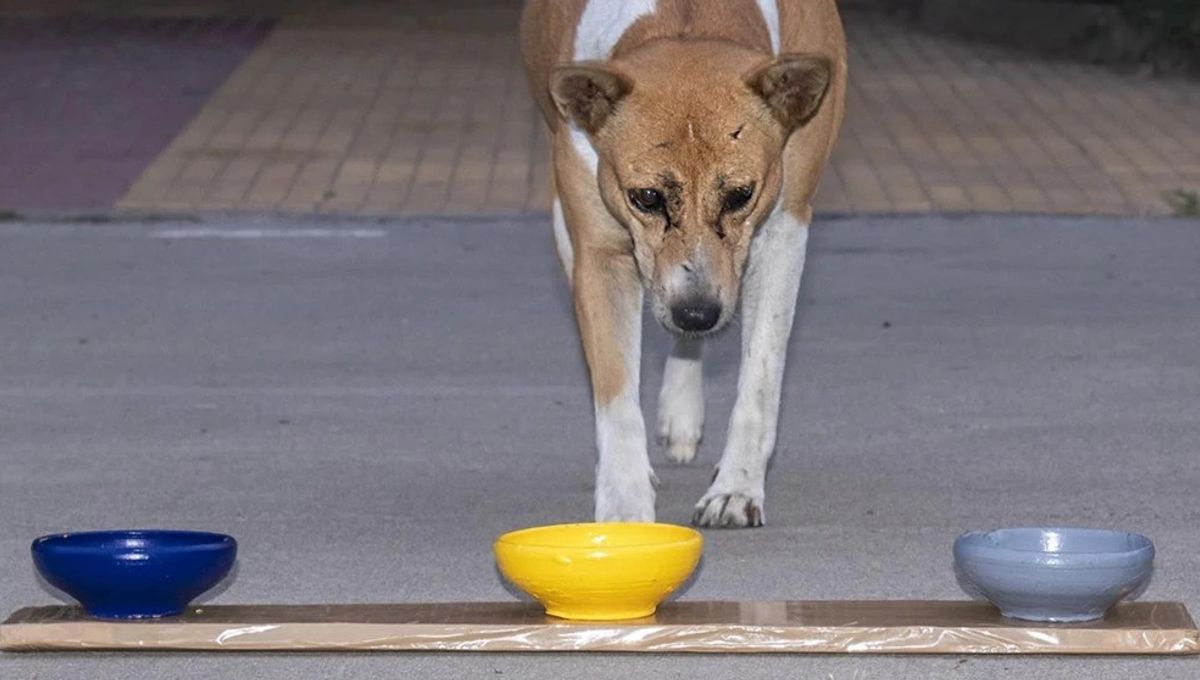
Street dogs in India appear to have a preference for the color yellow, disproportionately choosing bowls in a sunny hue over those that are blue or gray, even when the other bowls contain a snack.
ADVERTISEMENT GO AD FREE
Color preference is a widespread phenomenon and has been found in many animal species, with implications for behaviors like mate choice and foraging. It can be both innate or learned, and may even be driven by what the color usually signifies in an animal’s life.
We know that dogs have dichromatic color vision – they can see two primary colors: yellow and blue – similar to red-green colorblind humans. However, all research related to canine color perception thus far has focused on color discrimination after a period of training, and little is known about their color preferences. “It was hitherto unknown if and how untrained dogs are affected by color cues in their environment,” the researchers write in their study.
To investigate, they conducted a series of tests involving 458 free-ranging dogs from in and around Kolkata. In the first, they presented them with three bowls painted yellow, blue, and gray – all hues that are visible to dogs. Sometimes they all contained an equal amount of food, and sometimes they were all empty. Overall, yellow was the preferred color – the dogs plumped for the golden bowl more than half of the time, while the gray or blue bowls were each chosen under 25 percent of the time.
Then, the dogs were given bowls in their non-preferred colors – blue and gray – to identify any secondary preference, though no such inclination was found.
To make sure the color, not the smell, of the bowls was dictating the dogs’ choices, the team painted bowls in blue and yellow and covered them with magenta plastic sieves. This way, the pups could still get a whiff of the bowls without seeing them. This time, blue was chosen *slightly* more, but the results did not significantly differ from chance.
In a fourth and final experiment, the dogs’ favorite bowls were pitted against a food reward. Even with the addition of raw chicken or a biscuit, the gray bowls couldn’t tempt the dogs away from their beloved yellow. They made for the empty yellow bowls between 77 and 79 percent of the time, for the chicken and biscuit conditions, respectively.
ADVERTISEMENT GO AD FREE
So, why the obsession with sunshine hues? Though the researchers can’t be certain, it could be that the street dogs associate the color with the human food that they scavenge, or with raw meat and blood, both of which will appear yellow to them.
“I have a feeling that this preference got heightened with dogs’ co-evolution with humans, especially in India, where we use a lot of spices in our food and all the garbage they’re scavenging is loaded with turmeric,” Anindita Bhadra at the Indian Institute of Science Education and Research in Kolkata told New Scientist. “Looking for yellow might have an ecological advantage for them.”
Or perhaps the yellow bowls simply stand out from the other bowls and their surroundings – more research is needed to know for sure. The team is looking to do just that, investigating this potential color preference to understand what, if any, advantages it may have and the reasons behind it.
The study is published in Animal Cognition.
Source Link: Indian Street Dogs May Have A Favorite Color